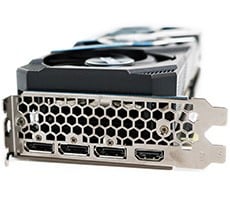AMD Radeon R9 Fury Review: Fiji On Air Tested
Performance Summary: With the exception of higher operating temps as a result of its air cooling, the Fury is superior to the Fury X in many ways when you consider price versus performance. This is the card that takes the fight to NVIDIA, delivering results that are on average only 4% to 7% behind Team Green's GeForce GTX 980 Ti, but for $100 less. And for $50 more than the GeForce GTX 980, the Sapphire Tri-X Fury we tested consistently defeats that card by a decisive margin. Add to this Fiji's improved power efficiency over Hawaii, recent Windows 10 WQHL driver support, relatively low operating temps, and reasonable overclocking headroom and you have a compelling choice on the table from AMD and Sapphire.
While the Radeon R9 Fury X was an elegantly designed and cool-running piece of hardware that introduced some much needed new technologies into the fold, it fell a bit short with performance expectations, especially for such a high end card strapped with a water-cooled setup. The air-cooled Radeon R9 Fury, however, once again shows AMD returning to form. What form is that exactly? Delivering solid bang-for-buck, like they did with cards like the Radeon 7950 and Radeon R9 290. The Sapphire Tri-X Fury we tested offers solid value in the high-end video card segment.
As always, there’s the entire ecosystem to consider when choosing between AMD and NVIDIA, but in terms of bang-for-your-buck performance, the Fury is a champion and the offering we tested is only bolstered by Sapphire's cooling design. It’s a release that adds some genuine excitement to AMD’s product stack in our opinion, is an important addition to the competitive landscape, and is a tantalizing precursor to what we might see from the upcoming Radeon R9 Nano.
Due to an unusually short review lead time, we weren't able to dive into each aspect of the Fury as extensively as usual, but it left a very good first impression and we're looking forward to additional testing in the near future.

|
|







